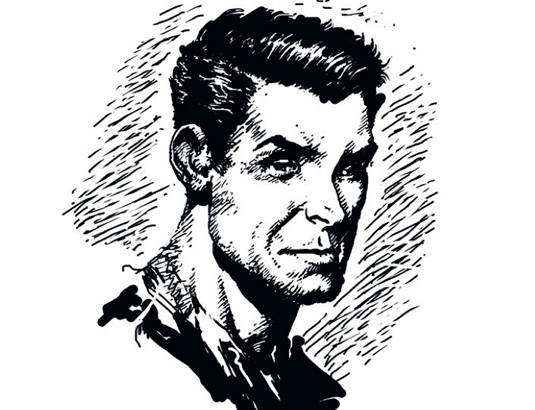How to draw different faces
Comic book artist Tom Foster reveals how to draw faces that stand out from the crowd.

When it comes to learning how to draw faces, especially with unusual facial types, I find it important to have a strong understanding of the underlying anatomy, as my ability to convincingly exaggerate elements of this will govern the legitimacy of my characters. So I have reference material, such as anatomical diagrams on hand to cover any of the gaps in my knowledge.
I look up images of celebrities whose faces seem to match the character type I’m aiming for most closely, and study the dominant shapes in their faces.
However, I try not to base my design too closely on one person, as a noticeable resemblance to a familiar figure may bring the reader out of the fiction of the story and compromise the character’s own unique identity.
So I draw from elements of different sources, because noticing the commonalities and the differences in my chosen models helps me understand what the core elements that define the character are.
By building up enough knowledge of the foundations of facial geography, I can choose precisely which elements to keep generic and which to make distinct, to better define only the things about the character that I wish to communicate.
01. Young faces

When drawing a young, healthy character, knowledge of the basics of proportion are essential. I hint a little at the underlying muscle and bone structure, but primarily aim to achieve balance and subtlety. Too much of any one specific characteristic can be jarring for the viewer.
02. Full faces

A fuller face can be a challenge because the bone structure and musculature are obscured by fatty masses, so anatomical diagrams may fall short. I use a fair bit of photo reference here to study how the fat around the jaw and cheeks alter the basic forms of the face.
Daily design news, reviews, how-tos and more, as picked by the editors.
03. Gaunt faces

For a wizened or gaunt face I exaggerate the bone and muscle structures, making use of anatomy diagrams as reference material. If I want to age the figure, looser skin around the jaw and neck and bags under the eyes help to lend authenticity to more obvious wrinkles.
Words: Tom Foster
Tom Foster is a professional comic book artist, best known for his work on 2000 AD and the Judge Dredd magazine. Outside of work, he likes to do stand-up comedy gigs. www.tomrfoster.deviantart.com
Liked this? Read these!
- How to draw a bear
- How to draw manga
- How to get started with ink drawing
- Discover the 5 best pencils for artists and designers

Dom Carter is a freelance writer who specialises in art and design. Formerly a staff writer for Creative Bloq, his work has also appeared on Creative Boom and in the pages of ImagineFX, Computer Arts, 3D World, and .net. He has been a D&AD New Blood judge, and has a particular interest in picture books.
